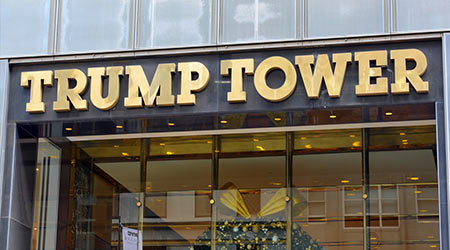
Eye on Energy: City’s Buildings To Be Graded
January 15, 2018
Energy efficiency will always be a high priority in institutional and commercial facilities as building owners and maintenance and engineering managers strive to control energy costs and limit the impact of facilities on the environment. Now, one major American city is on the verge of requiring its largest facilities to demonstrate to the public just how energy efficiently they are operating in the form of letter grades.
Of all the tools designed to provoke urban compliance with sustainability goals, the most effective, it seems, is the old-fashioned letter grade. That is the tool New York City restaurants have to use, for instance, to communicate their health department ratings to would-be diners.
Thanks to newly passed legislation, New York is becoming the first city in the country to require that “energy grades” — A to F ratings that are based on federal Energy Star energy efficiency scores — be posted at the public entrances of commercial and residential buildings over 25,000 square feet, according to an article in The Architects Newspaper.
Currently, the city collects energy and water use data on private buildings with more than 50,000 square feet and public buildings with more than 10,000 square feet and posts the results for these 11,000-plus properties online. The new rules will broaden energy-reporting requirements to owners of eligible private buildings, too, and cover a total of nearly 20,000 structures.
Read: Locating energy-wasting systems in facilities
The New York City Council recently passed the bill, 1632A, authored by Dan Garodnick, a city council member. If the mayor signs off on the bill, its first provisions will go into effect immediately, but owners will not have to post letter grades in 2020. To get their scores, building owners will need to fill out an online assessment of their property’s performance, and the results will be available in a searchable database, in addition to being posted on the building’s public entrances.
“As the federal government shirks its stewardship of our environment, it is up to cities to step in,” said Garodnick.
Resources: Energy efficiency information, insights and ideas
Despite the recent withdrawal of the United States from several global sustainability pledges, New York city is still aiming, per the 2015 Paris Agreement, to reduce its greenhouse emissions by at least 80 percent by 2050. The efforts to do so include transitioning to a renewables-based electric grid, achieving Zero Waste landfills, and replacing fossil-fuel based heating and hot-water systems with high-efficiency systems.
This Quick Read was submitted by Dan Hounsell — dan.hounsell@tradepressmedia.com — editor-in-chief of Facility Maintenance Decisions.
Next
Read next on FacilitiesNet












